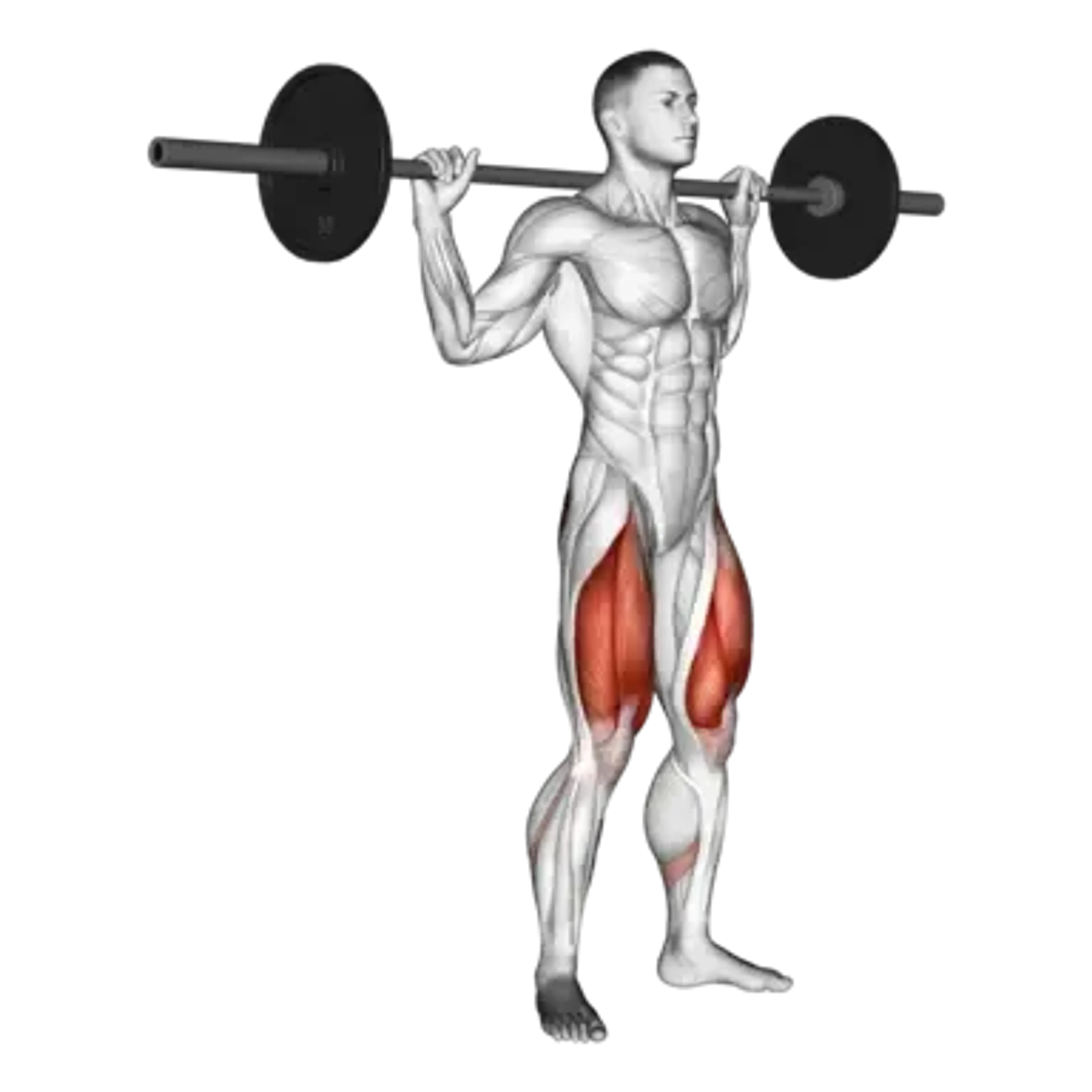Hack Squat

Overview
- Primary Focus:
- Upper legs.
- Equipment:
- Machine.
- Difficulty:
- Beginner.
General Information
Hack Squat is a compound exercise that primarily works the quadriceps, with secondary emphasis on the glutes, hamstrings, and calves. Performed on a machine, it allows for a guided and stable movement path, making it suitable for beginners and those looking to isolate their leg muscles without worrying about balance.
This exercise is commonly used to build lower body strength and size. Because of the fixed trajectory of the hack squat machine, users can lift relatively heavy weights safely, which can lead to effective hypertrophy, especially in the quadriceps. It's also a popular alternative or complement to barbell squats in leg-day routines.
One of the advantages of the hack squat is that it reduces spinal loading compared to free weight squats, making it a viable option for individuals with back concerns. However, attention to foot placement and range of motion is crucial to avoid joint strain and maximize effectiveness.
Muscles Worked
- Vastus Lateralis
- Primary
- Rectus Femoris
- High
- Vastus Medialis
- High
- Biceps Femoris
- Medium
- Gluteus Maximus
- Medium
- Semitendinosus
- Medium
- Adductor Magnus
- Low
- Soleus
- Minimal
Instructions
- Position yourself on the hack squat machine with your back flat against the pad and shoulders under the support pads.
- Place your feet shoulder-width apart on the platform, with toes slightly pointed out.
- Unlock the safety handles to release the sled.
- Brace your core and begin the descent by bending your knees and hips.
- Lower the sled until your thighs are roughly parallel to the platform or slightly below, depending on mobility.
- Push through your heels to return to the starting position, fully extending your legs without locking the knees.
- Repeat for the desired number of repetitions and re-engage the safety handles once done.
Common Mistakes
Injuries
Hack Squat is a low to medium risk exercise due to the machine's support and guided motion. However, improper form or foot positioning can increase the risk of knee and lower back strain.
Placing your feet too low on the platform or letting your knees cave inward can stress the knees. Likewise, rounding your lower back at the bottom of the movement can lead to discomfort or injury over time.
To prevent issues, focus on keeping your heels down, your back against the pad, and your knees aligned with your toes. Adjust the foot position based on your mobility and limb length to find a comfortable and safe range of motion.
Alternative Exercises

Frequently Asked Questions
- Q: Is hack squat easier than barbell squat?
Yes, the machine provides stability and removes the need for balance, making it more beginner-friendly.
- Q: Can I do hack squats if I have lower back issues?
Yes, as long as you keep your back firmly against the pad and avoid rounding, it can be safer than free squats.
- Q: How far down should I go on a hack squat?
Lower until your thighs are parallel to the platform or slightly below, without rounding your lower back.
Overview
- Primary Focus:
- Upper legs.
- Equipment:
- Machine.
- Difficulty:
- Beginner.




